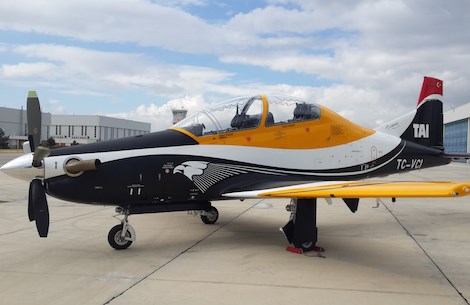PPG coatings specified for Turkish Aerospace Industries HURKUS trainer aircraft
Fifteen aircraft will be painted with Deft military polyurethane topcoat and eco-friendly lead- and chromate-free epoxy primer.

PPG Industries aerospace coatings have been specified by Turkish Aerospace Industries (TAI) for the initial production of its HURKUS new-generation basic trainer for the Turkish Armed Forces, with the potential for additional aircraft if production is extended.
Fifteen aircrafts will be painted with Deft military polyurethane topcoat and eco-friendly lead- and chromate-free epoxy primer as well as specialty coatings for specific functionality to perform in the HURKUS trainer aircraft’s demanding operating environment. These include high-solids Desothane HS/CA 8100 abrasion-resistant topcoat, Desoto high-temperature epoxy primer and topcoat, DeSoto high-solids integral fuel tank coating and an antistatic coating.
According to Mustafa Harman, PPG aerospace sales manager for Turkey, TAI is not only an original equipment manufacturer but also a key aviation industry subcontractor that is well acquainted with PPG’s coatings as well as its sealants and transparencies.
“TAI chose PPG coatings for the HURKUS trainer aircraft because its experience has demonstrated the high quality of PPG products and service,” Harman says.
Through its acquisition of Deft Inc., PPG extended its portfolio of military coatings to include the Deft product line.
For more information, visit www.ppgaerospace.com.
Related Content
-
Defining a Top Shop: Quality, Quickness, Communication, Community
Luke Engineering & Anodizing Co. takes an active role in its community and the industry while also focusing heavily on the quality of its work and employee treatment.
-
Attentive Employees Support Large Customer Base
As a Products Finishing Top Shop, this company’s success with offering a variety of finishing services would not be possible without its employee dedication and the pride that’s been instilled in them to produce quality products for its long list of customers.
-
PCI Names 2023 Board of Directors, Executive Officers
The next individuals serving on PCI's board of directors and as executive officers have been selected.















